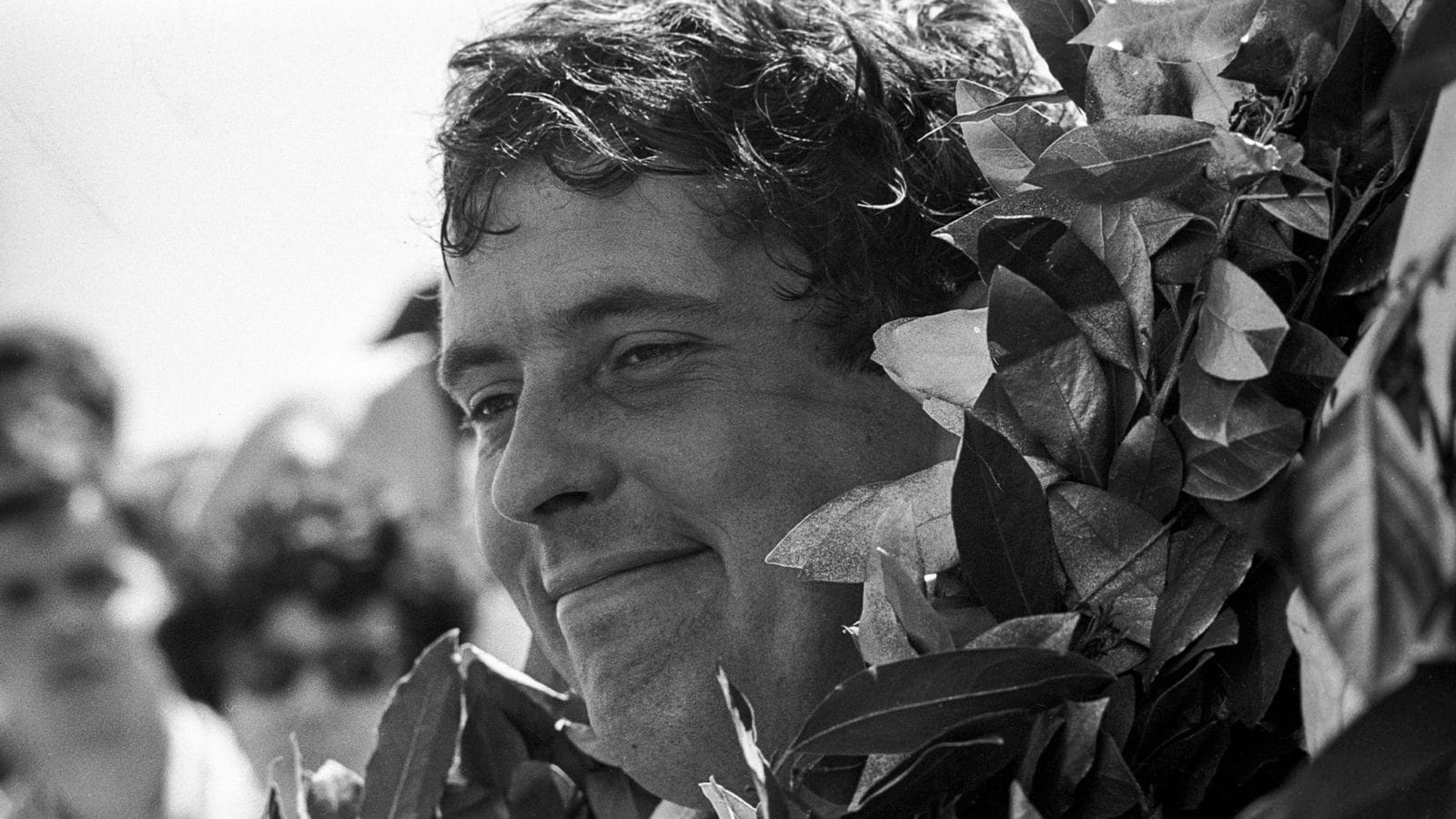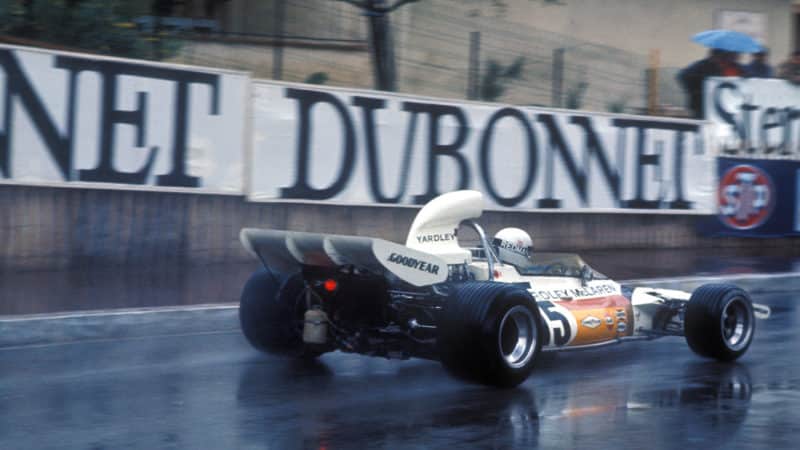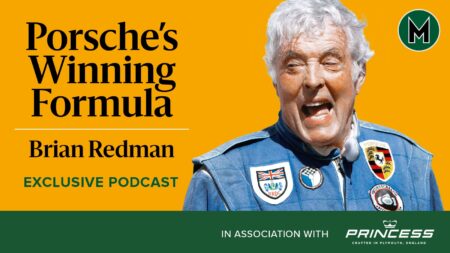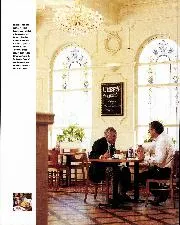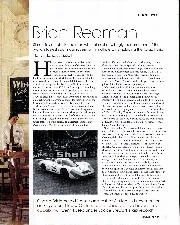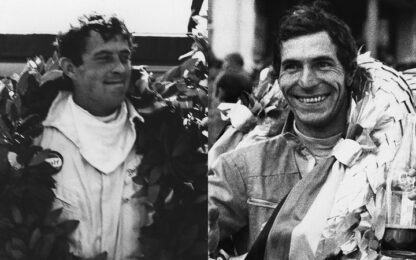Now 61, Brian looks remarkably well on it, and the once cruel scars on his face legacy of an accident at the 1971 Targa Florio have faded to nothing, absorbed into a deep tan. He talked about the Porsche 908/3 in which he crashed that day.
“I first saw the car at Weissach, at Porsche’s Christmas party. This thing was in a corner, under a sheet. ‘Herr Redman, you would like to look at the new 908/3?’ I said yes, I would, and I took the sheet off. Then I took the front bodywork off, and sat in the car and saw that my feet were sticking out in front of the front wheels. I got out, and Helmut Flegl said, So, Herr Redman, so what do you think of the 908/3?’ I said, ‘It looks like a bloody good car. For Douglas Bader.’
“Before the start of the Targa, Flegl advised me that if I was going to have a shunt, I should have it on the left side of the car because the fuel tank was on the right… Seppi (Siffert) had crashed it in practice, and although they repaired it, the steering broke on the first lap. I hit a wall. On the right, of course.
“I was on fire from head to foot, and couldn’t see a thing. I somehow got out of the car, and ran across the road, but it was 45 minutes before the helicopter came. Then they couldn’t find anywhere to land and then they couldn’t find me. Finally they took me to the wrong hospital, and nobody knew where I was. I was there for twelve hours, without being able to talk to anybody and without being able to see. Not what you’d call a pleasant experience.”
“D’you want to drive Formula Two, spud?’ I’ll give you thirty pound a week, guaranteed for a year”
Redman first came to national prominence in 1965, winning endlessly in a lightweight E-Type, entered by Red Rose Motors of Chester, which was owned by Charles Bridges. The following year Bridges bought a new Lola 170 for Brian to race, which he did with distinction, and in 1967 another member of the family took him into single-seaters.
“What a family that was… When Charles got out of racing, at the end of 1966, his brother David says to me, ‘D’you want to drive Formula Two, spud?’ he always called me ‘spud’, for some reason. Yes, I said, what’s the deal? He says, ‘I’ll give you thirty pound a week, guaranteed for a year.’ Right, I said.
“He never came to a single race. We’d be away for a month, racing all over Europe, and we’d get back. He’d be sitting there, 10 o’clock in the morning, having a glass of whisky. ‘Hello, spud. Where’ve you been? “Well, I’ve been to Barcelona, and the Eifel race at the Nürburgring, and so on.’ ‘Eeh, that were a grand trip. How did you do?’ I said, ‘Well, we were fourth here, and sixth there…’Eeh, well, that’s all right, then. Where are you going next?’ Very casual it was, really.”
